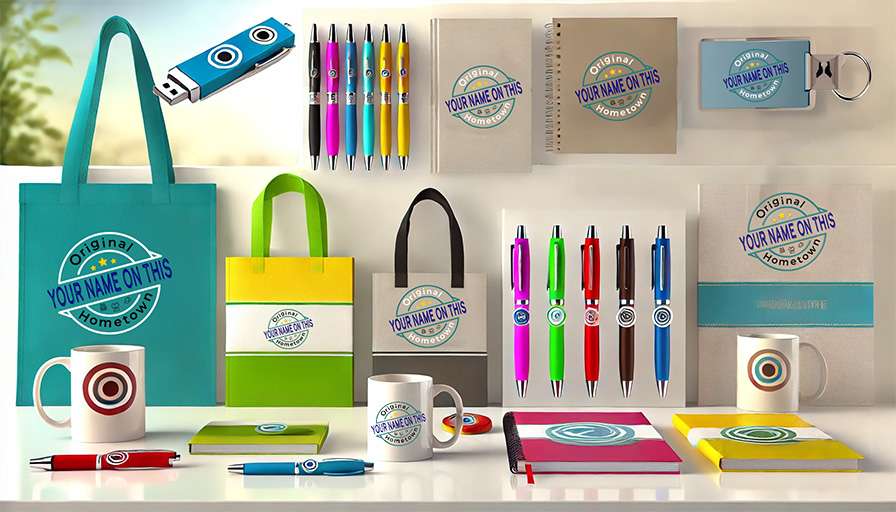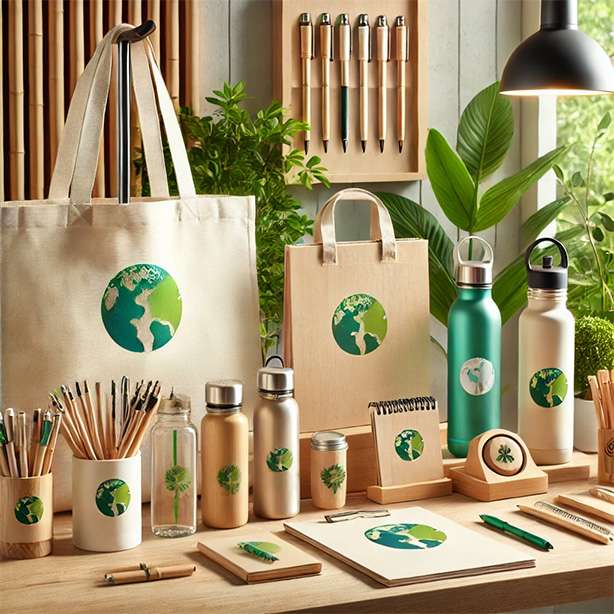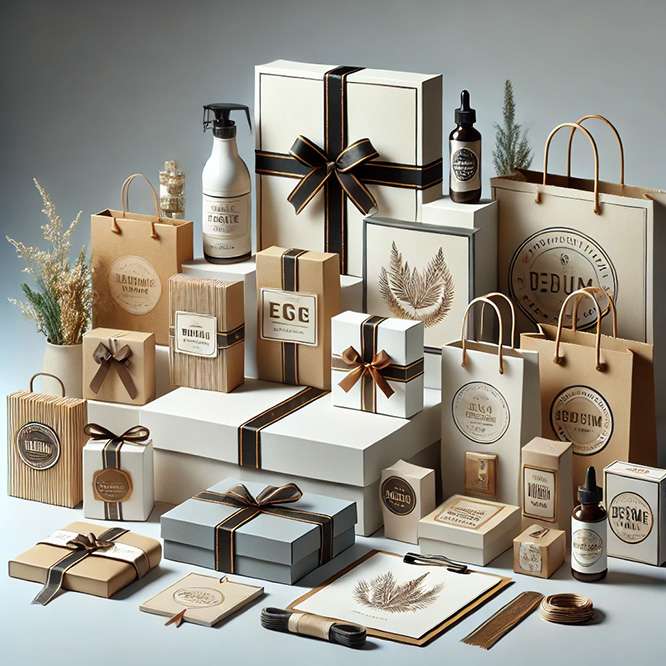
In an age where digital ads often bombard consumers, standing out and leaving a lasting impression on potential customers can be challenging. Promotional products offer a unique opportunity to break through this digital noise and connect on a more personal level. From pens and notebooks to high-tech gadgets and eco-friendly items, these branded products aren’t just tokens—they’re powerful marketing tools. However, using them effectively is essential to maximize their impact on your brand. Let’s dive into some tried-and-true tips to help you choose and distribute promotional products that will resonate with your audience and effectively promote your business
To make the most of promotional products, you first need to thoroughly understand your target audience. Different audiences find different products useful. For instance, if your main clientele consists of business professionals, items like premium pens, planners, or desk accessories may appeal to them. On the other hand, if you cater to younger audiences, tech gadgets like USB drives, phone stands, or even branded headphones could be more engaging.
To gain insights into your audience, consider conducting surveys, researching demographic data, or even reviewing social media interactions. Understanding your audience’s lifestyle and interests will guide you in selecting products that are useful to them. When customers find a promotional item practical, they’re more likely to use it frequently, keeping your brand top of mind.
Your promotional products should align with your brand’s image and values. Are you committed to sustainability? Then eco-friendly items such as reusable water bottles, bamboo pens, or recycled tote bags can help showcase this commitment. Consider tech products like portable chargers, phone grips, or branded Bluetooth speakers if your brand emphasizes cutting-edge technology.
Aligning products with your brand image creates consistency and reinforces your messaging. When recipients use these items, they are reminded of your brand’s principles and what you stand for, helping to build trust and loyalty.

Your promotional products should align with your brand’s image and values. Are you committed to sustainability? Then eco-friendly items such as reusable water bottles, bamboo pens, or recycled tote bags can help showcase this commitment. Consider tech products like portable chargers, phone grips, or branded Bluetooth speakers if your brand emphasizes cutting-edge technology.
Aligning products with your brand image creates consistency and reinforces your messaging. When recipients use these items, they are reminded of your brand’s principles and what you stand for, helping to build trust and loyalty.
While going for lower-cost items to distribute in bulk may be tempting, quality should never be compromised. High-quality products speak volumes about your brand and make a lasting impression on the recipient. Imagine the difference in impact between a flimsy plastic pen that breaks after a few uses and a well-made, comfortable-to-hold metal pen that lasts for months or even years.
Quality products show that you value your customers enough to invest in items they can rely on. It reflects positively on your brand, signaling that you’re trustworthy and committed to excellence. If your budget allows, consider investing in fewer but higher-quality items rather than large quantities of low-cost items.
When it comes to branding promotional products, balance is key. You want your logo and brand details to be visible, but not overpowering. Large, flashy branding can sometimes deter people from using a product daily, as they may not want to carry around what feels like an advertisement.
Opt for tasteful, subtle branding that’s incorporated seamlessly into the product’s design. For instance, you might choose to emboss your logo on a leather-bound notebook cover or engrave it on a sleek metal pen. Subtle branding can create a more premium feel and encourage recipients to keep the product in use.
One of the most effective ways to promote your brand is by offering genuinely useful items. Practicality enhances the lifespan of promotional products and maximizes brand exposure. If recipients can incorporate the item into their daily routines, your brand gains valuable visibility each time they use it.
Some practical items to consider:

By providing items that solve everyday problems or add convenience, you’re not just promoting your brand—you’re adding value to people’s lives.
In a world of mass production, personalization can be a game-changer. Adding a personal touch to promotional products can make recipients feel valued and appreciated, increasing their loyalty to your brand. While personalizing each product might not be feasible for every campaign, there are ways to incorporate small customizations.
For instance, you could include a recipient’s name on select items, like notebooks or pens, or tailor the product design to specific customer groups. You might even consider a tiered approach, offering personalized items to long-term clients or top customers to show appreciation for their loyalty.
The timing and location of distribution can significantly impact the effectiveness of your promotional products. Here are some strategic tips:
Seasonal or event-themed promotional products are a fantastic way to make your brand feel timely and relevant. By tying items to holidays, seasons, or special events, you can add excitement and increase the appeal of your products.
For example:
Aligning your promotional products with the time of year or a significant event creates a sense of relevance and can make your brand stand out positively.
Social media is a powerful amplifier for your promotional product campaigns. Run contests or offer incentives to encourage customers to post pictures of themselves using your branded items. This can extend your brand’s reach far beyond the initial recipients of the products.
Consider adding a unique hashtag to your promotional products or printing a QR code that directs recipients to your social media channels. By encouraging social sharing, you’re effectively turning recipients into brand ambassadors, spreading awareness organically through their networks.
Promotional products can serve as enticing incentives if your business has a loyalty or rewards program. By offering branded merchandise as a reward, you can motivate customers to engage more with your brand to earn points or perks.
For instance, you could offer exclusive items only to members of your loyalty program, like a high-quality branded hoodie or leather journal. This would build loyalty and create a sense of exclusivity and belonging, making customers feel more connected to your brand.
While standard promotional items like pens and tote bags have their place, sometimes it’s worth thinking outside the box. Unique items can grab more attention and make your brand memorable. If you’re in a specific industry, niche products related to that field can have an even stronger impact.
For example:
These distinctive items show that you understand your industry and can make your brand stand out from competitors who may be distributing more generic items.
Tracking the effectiveness of your promotional product campaigns is essential to understanding their impact. Start by setting specific goals for your campaign—are you aiming to increase brand awareness, generate leads, or boost customer loyalty?
Once you have clear objectives, consider using metrics to measure success:
Tracking these metrics helps you gauge the ROI of your promotional products and provides insights into what worked and what didn’t, allowing you to refine future campaigns.
Your promotional products’ packaging can impact just as much as the product itself. High-quality, thoughtful packaging shows that you care about presentation and value the recipient’s experience. Plus, attractive packaging adds an element of surprise and delight, encouraging recipients to share their experiences on social media.
For instance:

Good packaging can transform your promotional products into memorable, shareable experiences, enhancing their overall impact on your brand.
Promotional products remain one of the most versatile and impactful ways to connect with customers and build lasting brand recognition. By carefully selecting items that resonate with your audience, aligning them with your brand’s values, and distributing them thoughtfully, you can maximize the benefits of promotional products. Remember that quality and practicality are significant in how recipients perceive your brand, so invest in items that add value.
Whether using these products to enhance loyalty, promote a new product line, or simply create a memorable experience, your approach should be strategic. Promotional products can turn everyday items into powerful marketing tools that create goodwill, generate leads, and keep your business top-of-mind. With these tips, you can make a promotional product strategy that builds lasting connections and helps your business stand out.
Ready to elevate your brand with promotional products? Contact Your Name On This to explore our wide selection of customizable items that showcase your brand and make an impression that lasts!